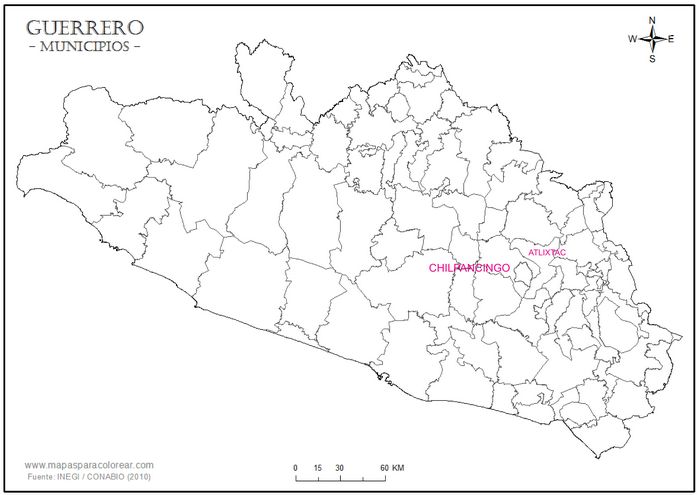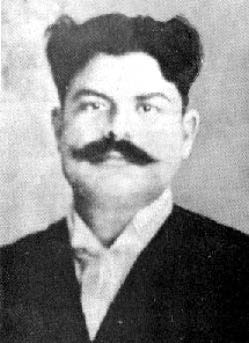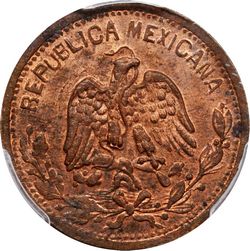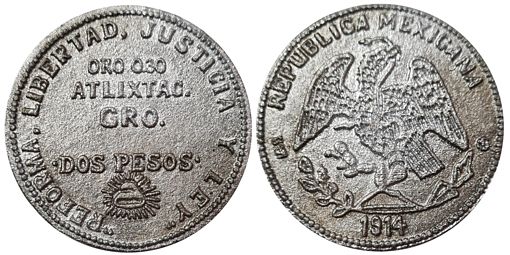Atlixtac

The hacienda of Atlixtac, a small but valuable sugarcane farm, belonged to an American named Thomas K. Mathew. It was one of the few haciendas that had modern agricultural and industrial machinery and on a modest scale was the only hacienda that resembled the sugar plantations of Morelos.
General Jesús H. Salgado, who signed the ratification of the Plan of Aya la in San Pablo Oxcotepec on 19 June 1914, was in charge of minting money on Zapata's orders in Atlixtac. to increase commercial transactions as well as combat the high cost of living. The metal was obtained from the Campo Morado mine, in the jurisdiction of Atlixtac.
 Salgado was born in Los Sauces, Teloloapan, Guerrero, on 5 February 1873. He was a member of a typical middle class family, dedicating himself to commerce and transport of goods in the village of Balsas. In March 1911 He joined the Maderistas, orgamising a group of men from the region and participated with them in the capture of Iguala, but then became a vazquista.
Salgado was born in Los Sauces, Teloloapan, Guerrero, on 5 February 1873. He was a member of a typical middle class family, dedicating himself to commerce and transport of goods in the village of Balsas. In March 1911 He joined the Maderistas, orgamising a group of men from the region and participated with them in the capture of Iguala, but then became a vazquista.
With the Plan of Ayala, Salgado joined the Zapatista movement, operating in his region, from Balsas to Tlapa and from Copalillo to San Marcos, in Guerrero, and quickly obtaining the rank of major general. On 28 March 1914 he took over as provisional governor of Guerrero, but continued with his military duties. He remained faithful to the Zapatista cause, until his death in combat in 1919.


KM-645 Atlixtac 10c (Stack’s-Bowers Auction, 24 June 2021, lot 72409)
Only copper 10 centavos coins were minted with the year of 1915 similar to the ESTADO DE GUERRERO coins but with the inscription ‘ATLIXTAC. GRO’. These coins were minted in the sugar mill used as a provisional mint. To mint the obverse of some coins a die made in Taxco was used.

Atlixtac $2
A rare silver 2-peso coin is claimed to be the first coin minted in Atlixtac, but some have suggested that it is a later invention..
(Based on Carlos Abel Amaya Guerra, Compendio de la Moneda de la Revolución Mexicana)
